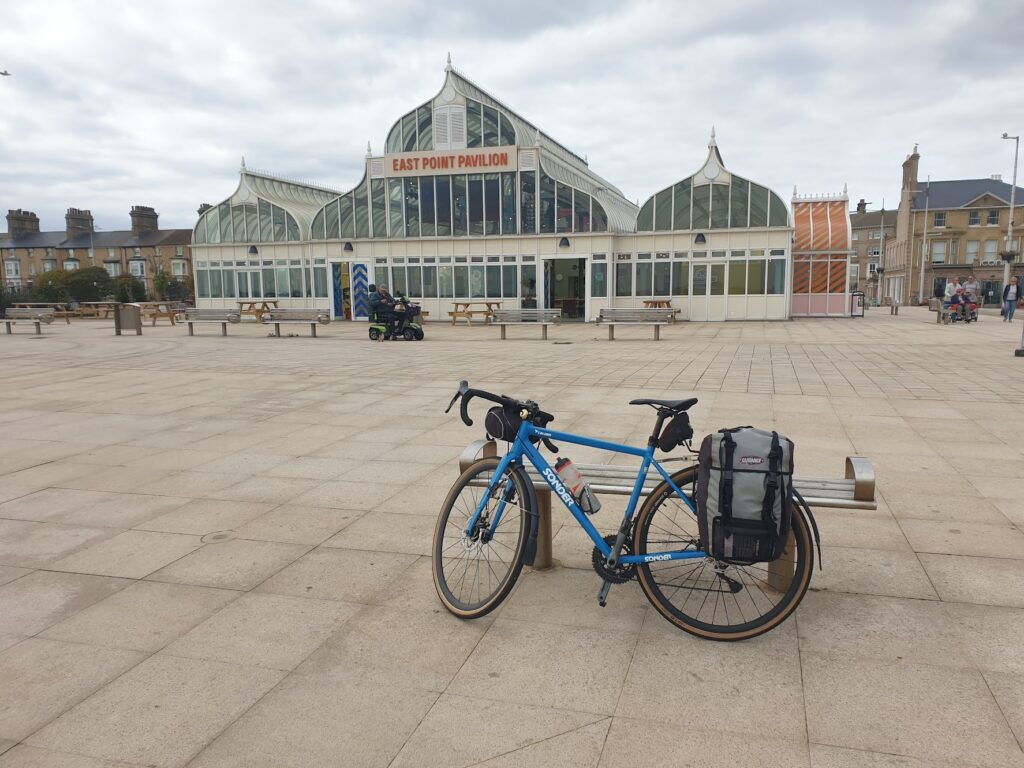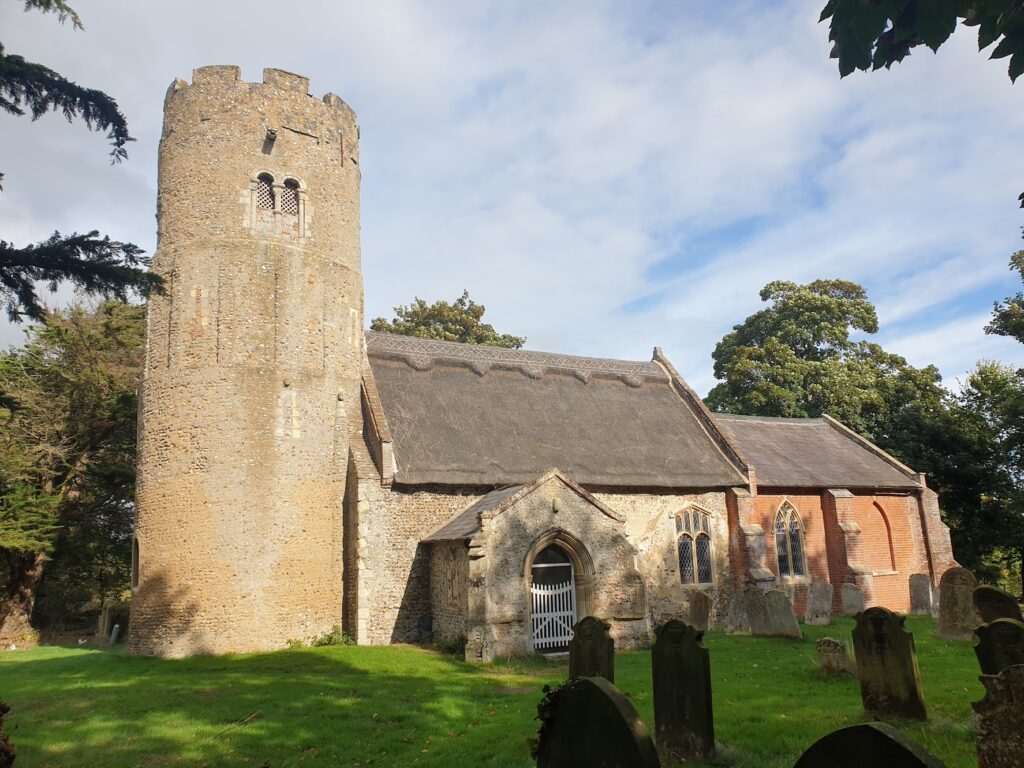
You can’t get any further east in Britain than Lowestoft. It simply isn’t possible. It is the Utter East. I cycled all morning to get there, so that I could get 5 (five) trains back to the fairly utter west, in the shape of Aberystwyth. From an OS map point of view, Lowestoft is a slightly odd case, since it is exactly in line with the row beneath it. The OS do a funny thing with the coast to coast I have just completed. While most of it runs in a pretty straight line, left to right, its outliers are very much out of alignment. Map 123 is half a map above map 124, and Lowestoft’s map 134 is half a map below map 133, meaning that the two ends, if placed together, would hardly overlap at all.
The morning’s ride to the coast began with a blast along quiet roads and then suburban bus lanes into the centre of Norwich. I wasn’t there for long because I literally had a train to catch (ahead of tomorrow’s strike). But I spent a very pleasant weekend break here exactly a year ago, after Jenni and I had walked the beautiful North Norfolk Coastal Path. We liked Norwich. As it happens, we will be back there for a night in a few more days, so I didn’t mind a fleeting visit this time. I found a sneaky way out into the villages on the eastern side of the city and soon left it behind.
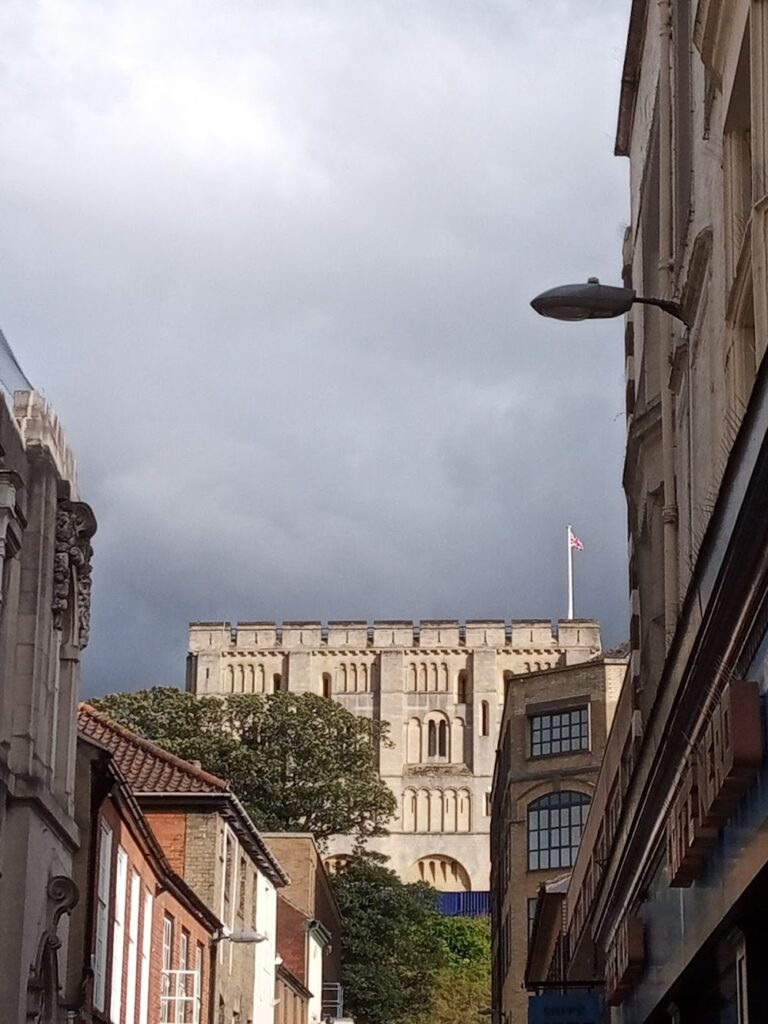
Even in this short passage through Norwich, you couldn’t fail to notice the very large number of mediaeval churches, mostly built from the distinctive local flint stone. In fact, mediaeval Norwich had no fewer than 57 churches within the city walls. That is more than any other city north of the Alps. Today, 31 of these still exist, of which 9 are still used for worship. In those days, only London and York had bigger populations in England and the churches are a legacy of the city’s former wealth and importance.
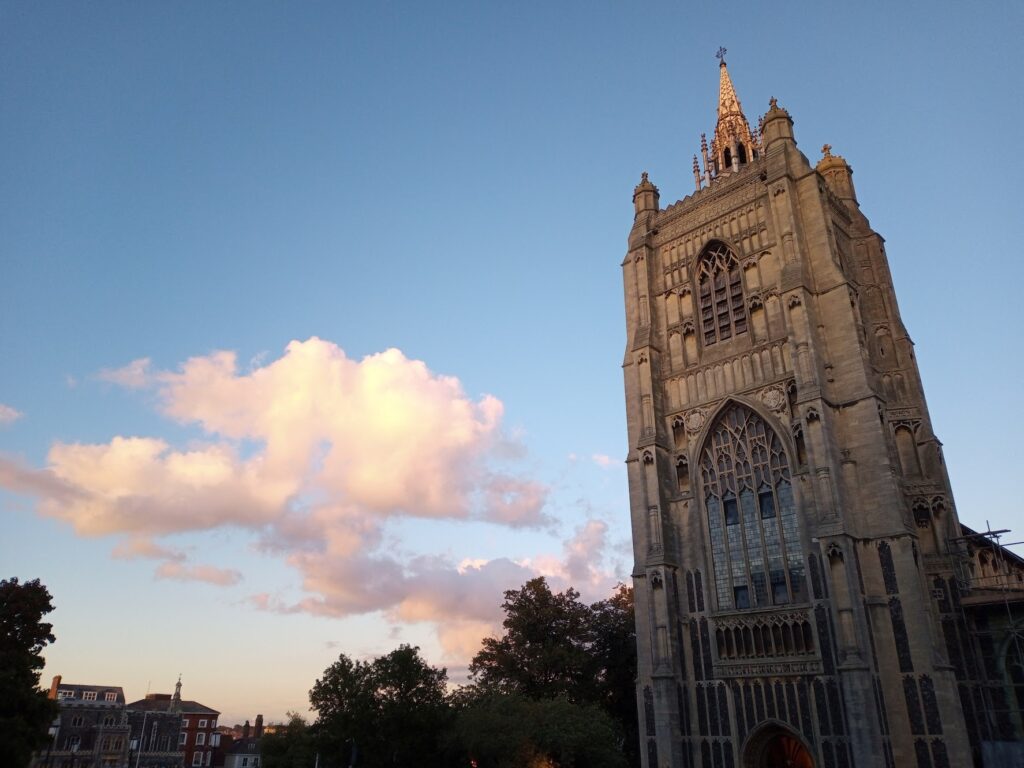
Between Norwich and the sea lies an area known – broadly – as the Norfolk Broads. It is a network of rivers and wide, shallow lakes (or broads) that are now very popular boating destinations. You can travel by boat for many miles visiting them all. The land in between is low lying and nothing special. To really appreciate the area, you have to take to the water. I have done it a couple of times as day trips and it was great fun. But I would love to explore further. Another trip perhaps. I was reminded of all this when I reached the very pleasant small town, or large village (it didn’t seem to know itself) of Loddon. It is unusual for me never to have even heard of a place this size in Britain; but I arrived here none the wiser and actually stumbled upon its marina on the River Chet (never heard of that either) by taking a wrong turn in the pleasant town centre. It was all very desirable and I made a mental note.
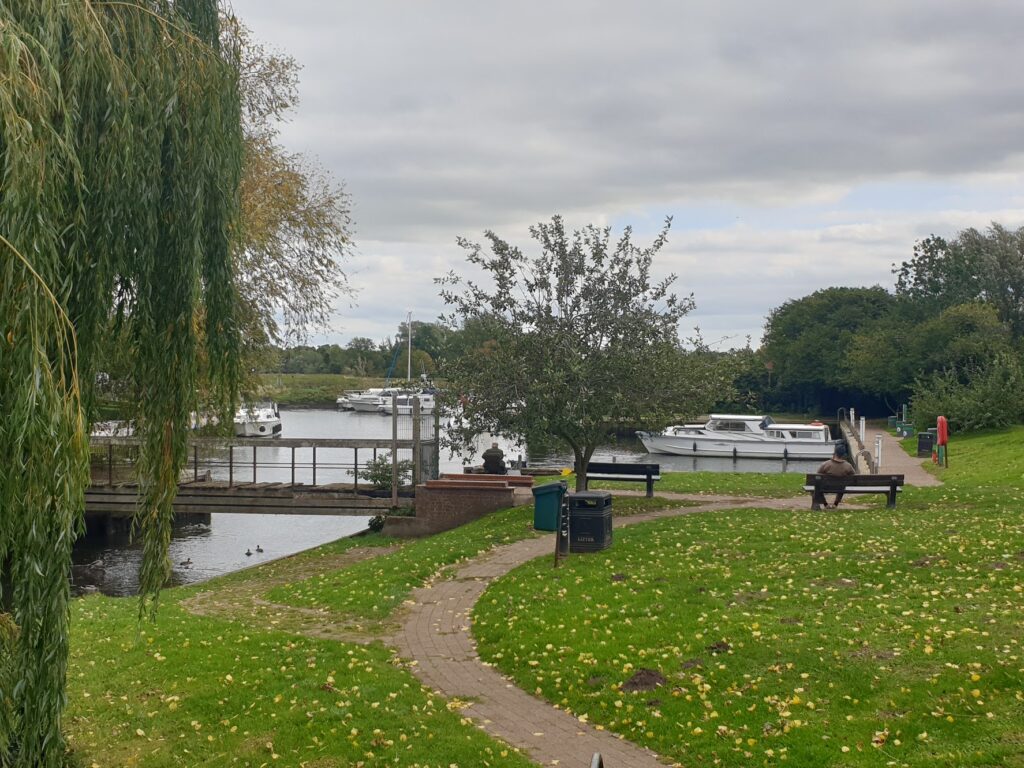
From here, when I found the right road, it was a delightful ride along tiny lanes past ancient Norfolk flint churches, of which the county has a seemingly endless supply. Some are unusual in the shape of their tower, or their thatched roof, or both. Another local quirk is that each village has in its centre a carved and painted wooden sign, showing the village name and often something of local relevance, like say trees or swans, or whatever. The one I photographed was in the strangely named village of Seething.
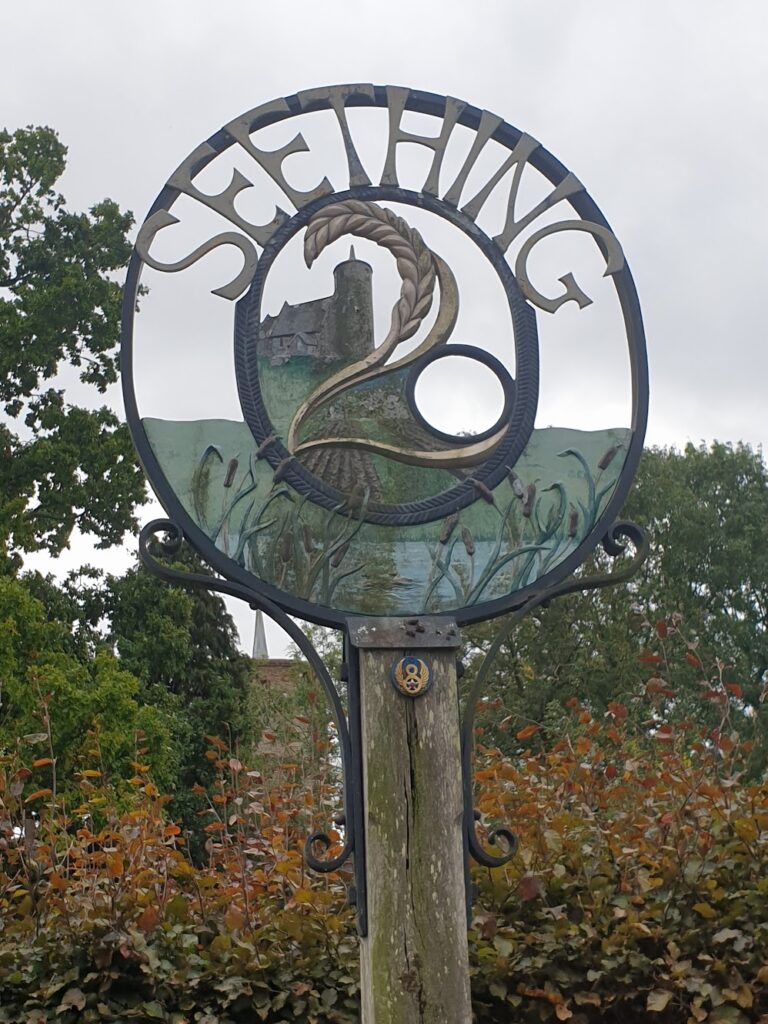
Finding an efficient and less busy route to Lowestoft was tricky because of all the rivers that kept getting in the way. There were few bridge options, but I got over the River Waveney at St Olaves and from there found a straight road to Lowestoft. This went through the quaint estate village of Somerleyton, which claims to be the place of invention of the hovercraft. Christopher Cockerell is credited with the idea of the modern hovercraft and he tested several models here in the 1950s. The English Channel was first crossed by hovercraft in 1959. There is a memorial to his first design in the village, in case hovercraft (or memorials) are your thing.
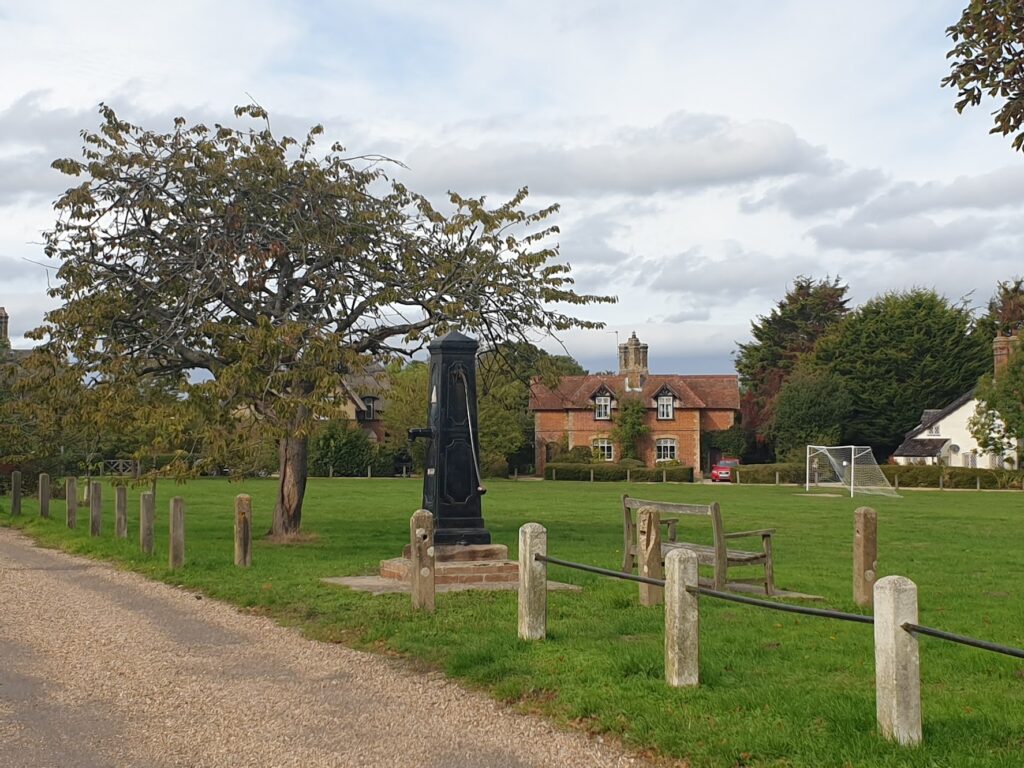
Lowestoft came as a surprise on account of it being a very big port with big industrial docks. South of the eastern most point, where the sun rises first in Britain, there is a more conventional seaside promenade. It is quite a big place. I wouldn’t call it pretty based on first impressions. But I didn’t hang around very long to gather further data. Against my expectations, I made the 12.57pm train to Norwich and began my complicated journey via Peterborough, Birmingham and Shrewsbury to Aberystwyth, where I duly arrived a little more than an hour later than I should have. But arrive I did, to start another coast to coast in the morning.
